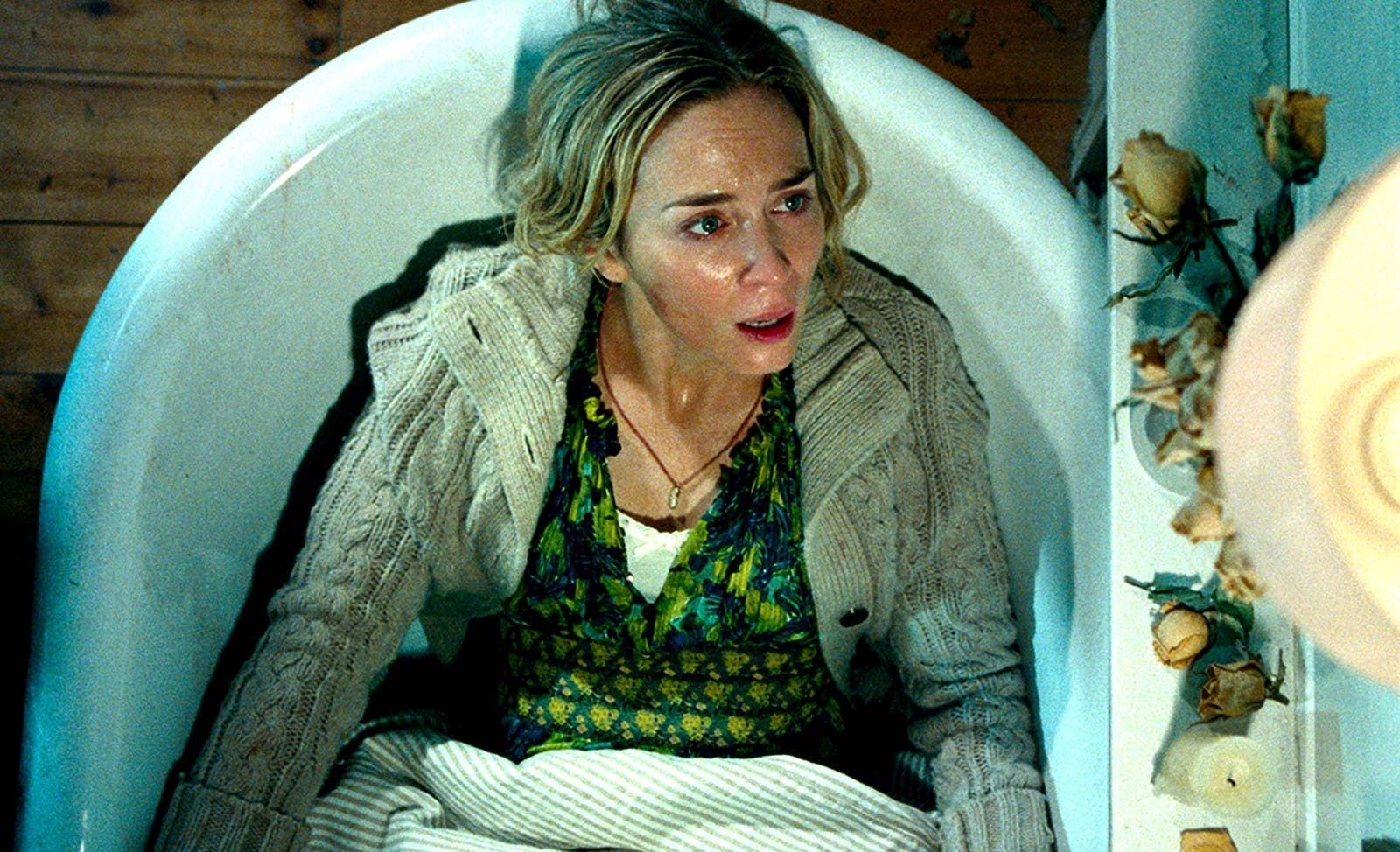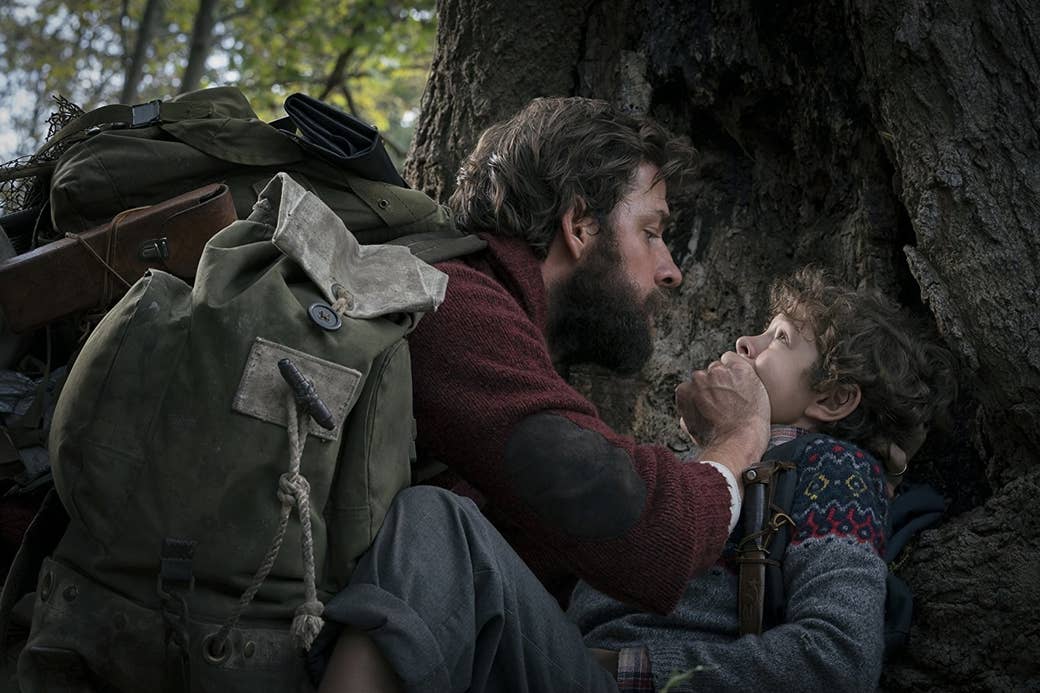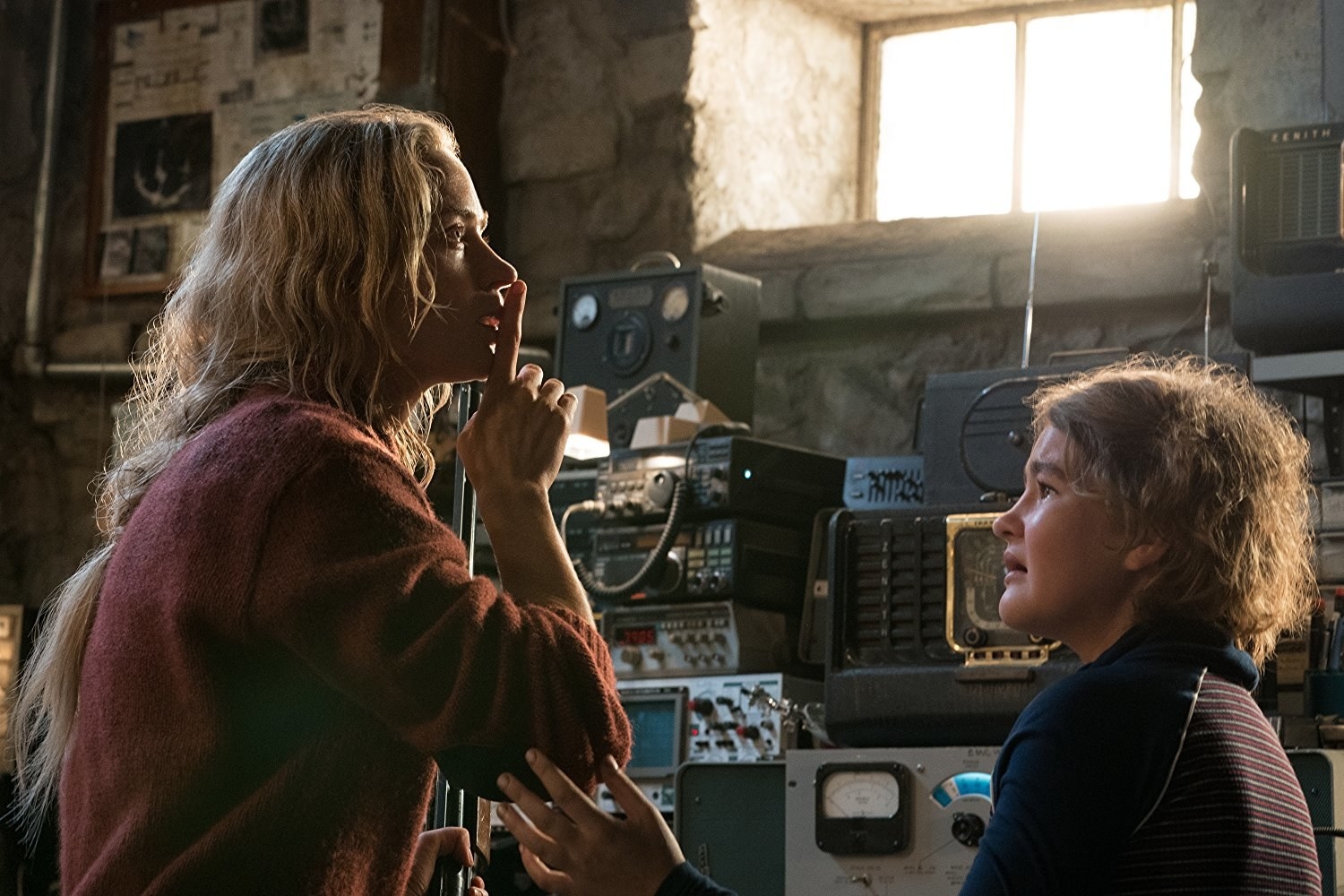
When John Krasinski set out to cowrite and direct A Quiet Place, he knew he was in desperate need of a crash course in horror. For years, he had largely avoided the genre, but now that he was going to make a horror film of his own, he had to play catch-up.
“The first thing I realized was how ignorant I was to be so strident about not seeing movies because I thought they’d be scary, because what I did was I realized I missed out on some of the best cinema that’s been going for the last few years,” he told BuzzFeed News. “Get Out, The Witch, The Babadook, Let the Right One In — all these movies are so incredibly well shot, well written, well thought out, that I'm such a lover of genre movies now.”
Emily Blunt, who plays Evelyn in A Quiet Place and has been married to Krasinski since 2010, admired his binge-watching, although she confessed that she’s “terrified” of the genre herself. “John watched every horror film under the sun to prepare for this movie,” she said. “He was like, ‘Do you want to watch It with me?’ I was like, ‘No, I don’t!’”
Krasinski’s horror education seems to have paid off with A Quiet Place, the third feature he’s directed after 2009’s Brief Interviews With Hideous Men and 2016’s The Hollars. The reviews that have come out since its South by Southwest premiere have been overwhelmingly positive. The film — which Krasinski cowrote with Bryan Woods and Scott Beck — follows a family of four as they live in silence to defend themselves from alien creatures who hunt by sound. Krasinski also stars as the father, Lee, who — along with Evelyn — works to keep their daughter, Regan (Millicent Simmonds), and son, Marcus (Noah Jupe), safe. It’s a tight, at times unbearably suspenseful thriller, with some of the most terrifying set pieces in recent horror memory. And because the characters can’t speak out loud or make any noise, it’s overwhelmingly quiet.
But A Quiet Place also has a rich emotional core and resonant themes of parental anxiety and the endless challenges of communication. Monsters aside, it’s about the lengths a mother and father will go to to protect their children in a world of constant danger. And then there’s Regan, who is deaf and sees herself as a burden on her family, when, in fact, her disability proves to be one of her strongest assets. Her fractured relationship with her father (and herself) provides a critical through-line to the film. That deeper level recalls the similar thematic richness of the modern horror films Krasinski cited, and it’s what elevates his movie past being just a tense creature feature.
One of Krasinski’s major takeaways from his horror binge was that the standouts of the genre never rest solely on scares. But then, that was never his approach to A Quiet Place. He was first offered the movie as an actor; at that point, it was a 70-page treatment that Woods and Beck had written. Once he saw a way in beyond the surface-level horror, he signed on as a writer and director. “It was terrifying and I could see that there was a potential for this giant allegory for parenthood, and that's what I put into the rewrite of the script and I really tried to go for it,” he said.

While he was nervous about taking on a new genre, he thought back to advice he received from Greg Daniels, the showrunner of The Office, on which Krasinski starred as Jim Halpert for nine seasons. Daniels told him that it wasn’t his job to be funny or to make sure his scenes with Jenna Fischer’s Pam were poignant; he just had to deliver the lines and leave the rest to the audience.
“I thought of Greg because I said, my job is not to try to make a scary movie, my job is to make a movie about a family that you care about and if you care about them enough, you'll be scared to go through what they're going through,” Krasinski said. “Yet again, I owe everything to Greg Daniels.”
Krasinski’s approach to A Quiet Place grounds the film in family drama without sacrificing any scares. It’s what drew Blunt to the project despite her reservations about the genre as a whole. She was moved by the script and its focus on a mother and father’s fiercely protective devotion to their children. A parent herself, Blunt said she identified with Evelyn more than most of the characters she’s played.
“It felt very close to home for me, as being a mother of two young children, feeling like I'm worried about exposing them to this brutal world,” Blunt said. “It's a fragile world we're in anyway, and wanting only happiness for my children, and their health and happiness and their safety, it's like, this mother and the way she operates was so — it was a no-brainer for me.”
A major reason why A Quiet Place succeeds as well as it does is that the family unit at its center feels cohesive and real. There’s a bit of an unfair advantage, of course: As real-life husband and wife, Krasinski and Blunt were able to use their own relationship to give a bit of unspoken backstory to Lee and Evelyn. “John and I have that immediate shorthand obviously because we're married and we have a whole lifetime of memories together to sort of draw from when imagining what life must have been like for this family before hell ensued,” Blunt said.
The film even includes real photos of the couple and their children as stand-ins for family photos. Given that built-in intimacy, there could have been some concern over privacy, but Blunt was unfazed. “Something that would have been more intimate for us would be a drama about marriage — that’s not what this movie is,” she said. “What’s been so cool about the reaction is that people talk about the film, they talk about [John] as a filmmaker, and then they’re like, ‘Oh yeah, by the way, they’re also, like, married in real life.’”

But it’s not just the parents who anchor the fictional family in lived-in honesty — it’s also the kids. Simmonds and Jupe are accomplished young actors who are able to convey the fear and frustration of their situation without ever opening their mouths. Simmonds, who earned acclaim for her breakthrough role in Wonderstruck last year, is especially compelling. For Krasinski, hiring a deaf actor for the role was non-negotiable. “She can give a much more honest and layered performance because she's actually experiencing it,” he said. “I needed a guide. I needed someone to actually help me talk about the nuance of — or talk to me about the nuance of — what it's like to be a member of a family when you're deaf and they're hearing.”
That authenticity shines through in all the scenes with the family — and it’s part of what makes the peril they’re in as the creatures descend on their farm so stressful for an audience to endure. Beyond their own bond as a married couple, Krasinski and Blunt had the younger actors and their parents over to their home. Krasinski said he learned the most about how to portray those fictional family dynamics by watching their real family dynamics play out in front of him. As a result, the unwavering parent-child bond that he wanted to keep front and center feels impressively organic and holds the film together.
With that combination of high-concept terror and potent emotional honesty, A Quiet Place emerges as exactly the kind of horror film Krasinski wanted to make — and one he was uniquely suited for. It’s also another great reminder of how a genre that has historically been dismissed and maligned can actually offer rich storytelling while still scaring the crap out of audiences.
“It's a genre with sort of endless potential and possibilities,” Blunt said. “You've got a heightened reality, or a slightly heightened reality, and you can really actually create a sort of more profound backdrop for it. You can carve out new space for yourself in the horror genre, and I think that's what films like Get Out and certainly John was trying to do.”
Krasinski is thrilled by the response he’s gotten so far — and somewhat relieved. He admitted that he was nervous going into this experience, particularly as a horror newcomer. But while he’s not sure what the next directorial project he takes on will be, genre fans can rest assured he’s eager to give horror another shot.
“This genre now is something where some of the most complicated storytelling is happening, some of the biggest conceits, some of the biggest ideas, so that’s where I want to be,” he said. “What was so thrilling about this was being outside of my comfort zone. I’d love to do it again.”
